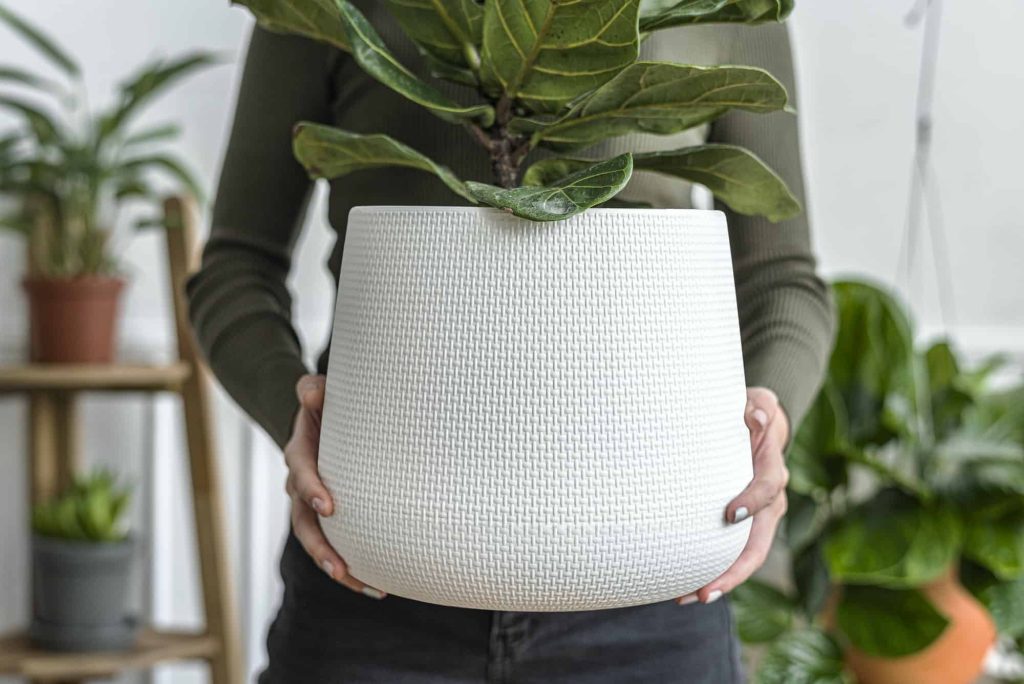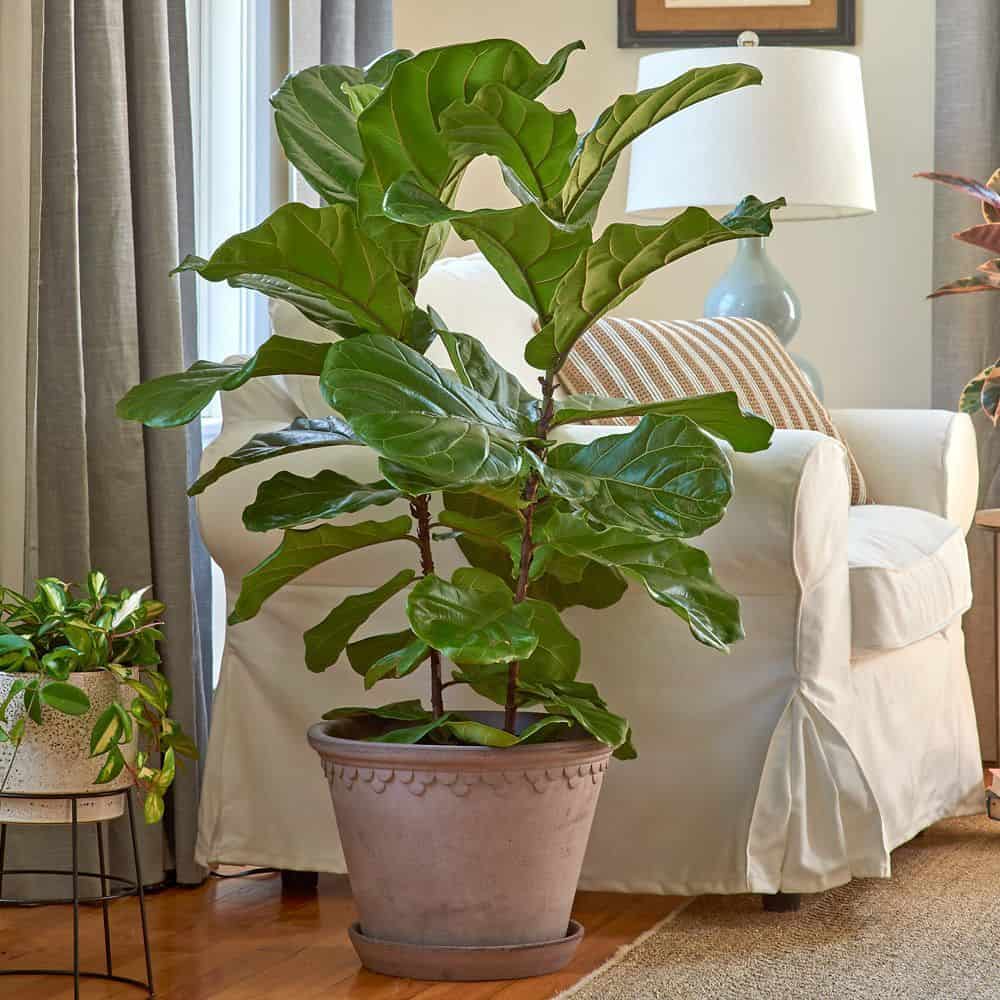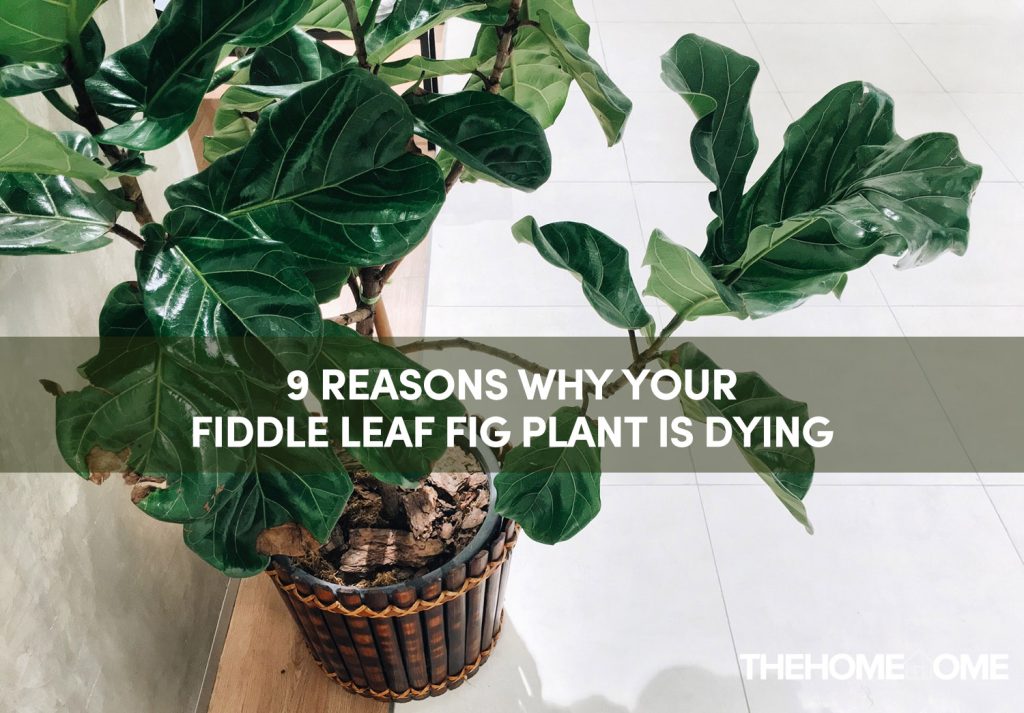The fiddle leaf fig has splendid attractive green leaves when healthy and properly taken care of, therefore the signs are easy and obvious when the plant is dying. Are you curious about what’s wrong and why your plant and its foliage aren’t as magnificent as before?
The obvious telltale signs why your fiddle leaf plant is dying is because of improper watering, excessive dropping of leaves, brown spots on leaves, pest and disease damage, under-fertilization, lack of humidity, and discoloration of leaves.
The fiddle leaf fig is a popular sensation around homes and offices, as a means to add a natural flair and indoor air purification. However your plant may be dying, and you need to know why, and solutions to fixing the problem.
9 Reasons Why Your Fiddle Leaf Fig Plant Is Dying
The beauty and splendor of every plant come to life when they are healthy and properly cared for, the same goes for the fiddle leaf fig plant. Although it can be tricky to raise them well, it is better to quickly notice any signs of your plant dying, to help prevent further suffering or death.
Read on, to discover 9 reasons to look out for when your fiddle leaf fig is suffering and how best to nurse your plant back to good health.
1. Excessive Dropping Of Leaves
When you notice your healthy fiddle leaf fig is losing leaves at an alarming rate, it is easy to tell your plant is unhealthy. Do not fret, because this may happen due to stress, dry conditions, or change in the environment.
To fix this, check that you’re not overwatering your plant, only water when the soil is fairly or completely dry. Ensure that your plant isn’t exposed to dry air, direct sunlight or lighting, or air conditioning. It should be placed where it can receive indirect lighting, and you will notice changes in your plant.

2. Irregular Soil pH Level (Soil Acidity)
Your plant may be suffering and the cause of it, can’t be detected with our eyes or hands. The soil pH levels, where your plant is placed, can either be helpful or harmful to its health. Usually, for fiddle leaf figs, they are comfortable around pH levels 6 and 7, it is always good to know the right soil range for each of your plants.
Simply use a moisture meter to discover the pH level of your soil, and you can use alkaline water drops to adjust your plant’s pH. After monitoring and you notice the pH isn’t right, you need to repot with the recommended soil and a well-balanced fertilizer.
3. Discoloration or Yellowing Of Leaves
The fiddle leaf figs are popular for their luscious green foliage, and when you start to notice the green changing to yellow-ish, it is either the pony is dying or unhappy about being overwatered.
As a plant owner, your water to feed your plant with enough water, but you may be overwatering and this would lead to root rot and weakening of the plant. Another cause is insufficient light, this plant needs about 6-8 hours of indirect light or sunlight a day.
Without enough light, the plant won’t photosynthesize, which turns the leaves of your plant yellow.
Other reasons that cause the yellowing of leaves are under-fertilization, pest, bacterial infection, or irregular temperature. Adjust your plant to receive the right amount of the factors listed, and you should start receiving results.
4. Pest Problems
Pest problems are common with indoor plants and it is necessary to tackle them immediately when spotted, to save your suffering plant.
Insects, bugs, or mites (spider mites) are very harmful to your plant and eat up your plant’s nutrients. The spider mite is especially the worst because they are tiny to be easily noticed and leave small webs on your plants, which is extremely dangerous to their health.
It can cause leaves to drop, withering leaves, brown spots on your leaves, and makes your plant to be unhealthy. Neem oil is a great way to tackle these mites, or 1 tbsp of baking soda and neem oil in a spray bottle and spray on your plants.

5. Brown Spots on The Leaves
When you notice brown spots on your fiddle leaf fig plant, it is usually because of fungal infection from the roots, due to too much moisture in the plant’s soil. Also overwatering and a poor drainage system lead to root rot, which eventually spreads to the leaves of your plant.
It can be difficult to determine if your plant’s ailment is root rot, the only way to be certain of it is by removing the plant from the pot, and inspecting its roots. If the root is brown and soft, then it is root rot.
If the brown spots are few on the leaves, let your plant dry out and observe the plant for about two weeks to check if the roots are recovering, or you can prune out the affected leaves. However, if the brown spots are many, then it’s best to cut away the brown roots and repot.
6. There Are Black Edges on My Fiddle Leaf Fig
This is caused by either overwatering, root rot, poor drainage systems, lack of enough lighting, or it’s sitting on a too-large pot.
It is best to regulate your watering, have a good drainage system, ensure your plant gets enough light, fertilize when needed, and get a well-size pot for your plant.
7. Curling or Folding Up Of Leaves
When you are underwater, or there are changes in temperatures and humidity, your fiddle leaf fig starts to curl. Change in the plant’s environment or season can cause stress or shock which leads to the curling of leaves.
It is best to invest in humidifiers for houseplants, or keep a stable temperature of 60-75°F going, to help nurse your plant, back to good health.
8. The Leaves Are Turning White (Whit-ish)
This is caused by sunburn from too much exposure to direct sunlight or lighting, the leaves may also change color to light brown, red or yellow. This can be treated by pruning the sunburned leaves and placing your plant where it gets enough indirect light instead.
Another reason may be a fungal infection called mildew infection, it is a thin whitish coating on your plant, that’s harmful to its health. It can be treated by applying neem oil to get rid of the infection and using a humidifier to boost airflow.
9. Your Fiddle Leaf Fig Looks Leggy
When you notice your plant is growing tall with thin and a weak stem, it is leggy. This is caused by a lack of sunlight, lack of pruning, and fertilizers.
Simply treat this by using gently balanced fertilizers, give your plant enough indirect light and prune twice a year, in spring and fall.
Should I cut off dead fiddle leaf leaves?
How do I know if my fiddle leaf is dying?
How can you tell if a fiddle leaf fig has root rot?
Final Thoughts
Now that the common reasons why your fiddle leaf fig plant is dying have been explained above. It is clear that a balanced routine, proper monitoring, and care for your plant is all it needs to thrive.
Ensure to keep a balanced watering schedule, water only when the soil is dry, give your place enough lighting, invest in humidifiers, keep away from direct light, dry conditions, or air conditioning, fertilizer when needed, and prune twice a year.
Do this and you are on the road to your favorite houseplant, surviving through the upcoming years.
